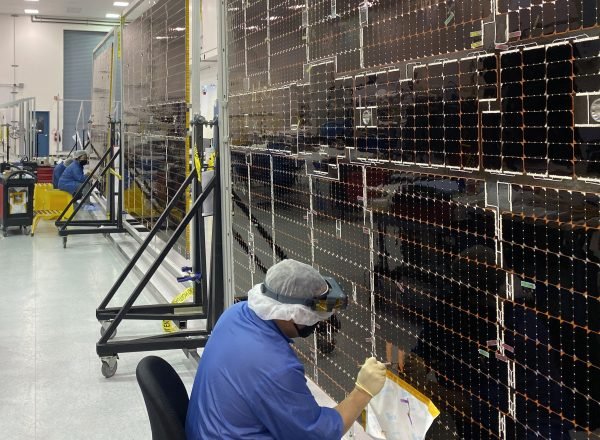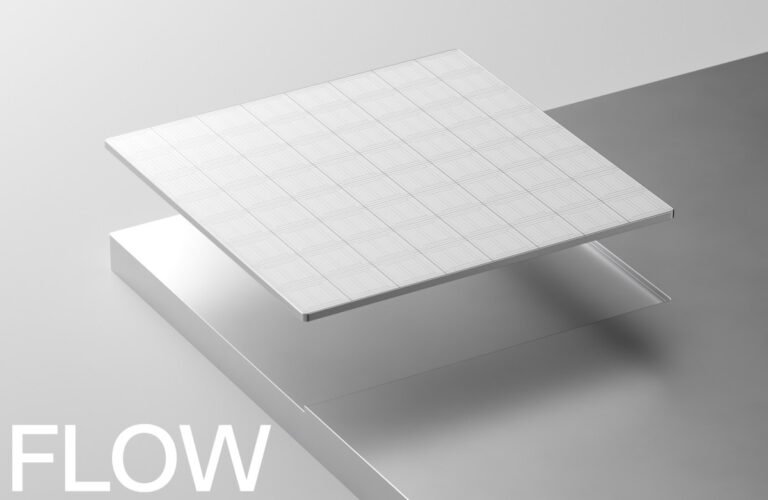
The funding, which would go to Rocket Lab subsidiary SolAero Technologies, would help increase the company’s compound semiconductor production by 50% within the next three years.
The funding would help the company build out its Albuquerque-based facilities and create more than 100 direct manufacturing jobs, Rocket Lab said in a statement.
Rocket Lab acquired SolAero, which operates a ~115,000-square-foot manufacturing facility, in 2022 for $80 million.
The company is one of just two in the United States that specializes in the production of space-grade, radiation-resistant compound semiconductors, or space-grade solar cells.
SolAero is highly vertically integrated: In addition to the solar cells, the firm also manufactures solar panels and power modules.

Flow is a spinout of VTT, a Finland state-backed research organization that’s a bit like a national lab.
You can’t just magically squeeze extra performance out of CPUs across architectures and code bases.
But Flow has been working on something that has been theoretically possible — it’s just that no one has been able to pull it off.
What Flow claims to have done is remove this limitation, turning the CPU from a one-lane street into a multi-lane highway.
The chef still only has two hands, but now the chef can work ten times as fast.

Animating a 3D character from scratch is generally both laborious and expensive, requiring the use of complex software and motion capture tools.
Cartwheel wants to make basic animations as simple as describing them, generating a basic movement with AI and letting creators focus on more expressive tasks.
There’s a lot of value in just quickly getting it out of your head and moving.
“There’s this notion of AI replacing creative work, and as someone who does creative work, it’s like… no!
This leads to more animation, more motion, one person doing more,” said Jarvis.

It may seem like a paradox to have virtualized Kubernetes clusters.
Loft Labs saw a similar problem with resource utilization in Kubernetes clusters that VMware saw with server utilization, and has built a virtualization tool to make them more efficient by sharing common underlying applications.
Loft Labs lets users share these common applications with multiple virtual clusters in the same way that VMs share server resources.
“We’re essentially turning many clusters into one cluster, and then have virtual clusters on top of the common applications,” CEO Lukas Gentele told TechCrunch.
And the thing that we learned was the problem of sharing Kubernetes clusters, isolating tenants in the cluster and how hard it is.

The U.K.’s competition watchdog has sounded a warning over Big Tech’s entrenching grip on the advanced AI market, with CEO Sarah Cardell expressing “real concerns” over how the sector is developing.
She said it’s important that competition enforcers don’t repeat the same mistakes with this next generation of digital development.
But for now the CMA has not gone that far, despite clear and growing concerns about cozy GAMMA GenAI ties.
“It may be that some arrangements falling outside the merger rules are problematic, even if not ultimately remediable through merger control.
(The short version of what it wants to see is: accountablity; access; diversity; choice; flexibility; fair dealing; and transparency.)

Venture capitalists’ appetite for fusion startups has been up and down in the last few years.
The road to true fusion power remains long, but the kicker is that it’s no longer theoretical.
He added the timeline was to be able to get to fusion energy by the mid-2030s.
If we manage to get to that then the middle of the 2030s is possible.”The startup’s investors are equally convinced.
And there are at least 43 other companies developing nuclear fusion technologies.

For years, the solar energy sector has grappled with interseasonal energy storage.
The claim is this tech does the storage more cost-effectively than any battery or liquid hydrogen solution on the market.
It enables hydrogen storage at densities approximately 50% greater than liquid hydrogen, presenting a significant advancement in hydrogen storage solutions.
A robust, reusable energy storage solution could bridge these timings, ensuring a stable energy supply when these renewable sources encounter unavoidable intermittent periods.
The firm certainly has investors’ attention: Photoncycle just raised $5.3 million (€5 million) to build its first few power storage devices in Denmark, which Photoncycle has chosen as its test market.

Hardware maker Rabbit has tapped a partnership with ElevenLabs to power voice commands on its devices.
The Rabbit r1 will ship with ElevenLabs’ tech, which will enable voice commands from the users and how the pocket AI device talks back to them.
ElevenLabs said that while r1 was poised for voice interaction from the start, the company’s low latency models will make interactions more human-like.
Our collaboration is about making the r1 a truly dynamic co-pilot, ” ElevenLabs’ CEO Mati Staniszewski said in a prepared statement.
In January, Rabbit said that it will use Perplexity AI’s solutions to answer users’ questions on the device.

Just like battery-electric cars 20 years ago, hydrogen fuel cell cars suffer from the old chicken and the egg problem.
Nobody wants to buy a fuel cell vehicle until the supporting infrastructure is in place, but it’s tough to invest in infrastructure when nobody owns a fuel cell vehicle.
Honda sees four ways to apply the second-generation hydrogen fuel cell: in consumer and commercial fuel cell vehicles, in stationary power stations and in construction machinery.
Honda learned that Clarity Fuel Cell owners usually drove very short distances, five or 10 miles at a time and a hydrogen fuel cell isn’t the most efficient on quick trips.
The fuel cell CR-V has a 10.2-inch digital gauge cluster with all the power-delivery information your nerdy brain could possibly want.

Just like battery-electric cars 20 years ago, hydrogen fuel cell cars suffer from the old chicken and the egg problem.
Nobody wants to buy a fuel cell vehicle until the supporting infrastructure is in place, but it’s tough to invest in infrastructure when nobody owns a fuel cell vehicle.
Honda sees four ways to apply the second-generation hydrogen fuel cell: in consumer and commercial fuel cell vehicles, in stationary power stations and in construction machinery.
A Honda CR-V with a twistHonda is not new to the hydrogen fuel cell game.
2025 Honda CRV e:FCEV inside and outThe e:FCEV looks a lot like the standard CR-V, but those with sharp eyes will notice a few key differences.













